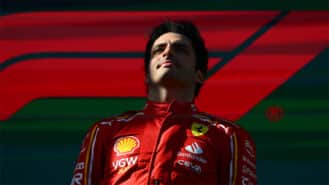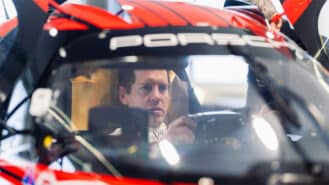
Only Tsunoda can save F1 in 2025: Japan GP – Going up, going down
In the face of soul-destroying boredom, only one driver can bring the entertainment needed to rescue a sport which resembles a broken AI tribute to itself
Few cars ever achieve the cult status enjoyed by this week’s classified spotlight. So distinctive is the Italian stage hero that anyone with an interest in hot hatches must have at some point contemplated purchasing a Lancia Delta Integrale.
This is doubly true for rally enthusiasts as the car, in its various forms, won six consecutive constructors’ championships between 1987 and 1992. In addition to the constructors’ crowns, Juha Kankkunen and Miki Biasion both secured a pair of drivers’ world titles at the helm of the angular car.

When rallying’s Group B era came to an end in ’86, Lancia required a production-based model on which to build its ’87 Group A entrant. The company took a Delta HF, added a turbo, a four-wheel-drive system, re-named it the Delta HF FWD, and proceeded to use the updated road car as a basis for the ’87 championship assault.
In non-rally form the Delta HF FWD produced 165bhp and 210lb/ft of torque from the 2-litre, twin-cam four pot. It was the beginning of a special sequence of Deltas that culminated with the Evo II in ’93.
Despite the Delta HF’s immediate success, the car’s replacement is where the cult really kicks off. Not content to rest on its laurels, Lancia widened the Delta’s track, pushing its wheels outwards into newly formed, boxy arches. The turbo was enlarged, as was the intercooler, and power jumped to 185bhp and 224lb/ft of torque.
Lancia labelled the upgrade the ‘Integrale’ – Italian for ‘complete’ – and didn’t look back. Few competition cars have ever been so successful. It was a thrilling prospect for road use too. Writing of the model in 2009, Car magazine concluded, “no four-wheel drive saloon is as much fun to drive, full stop. And that includes the Audi Coupé Quattro.”

In ’89 Lancia revealed a further improvement. The engine’s valve count doubled, from eight to 16, and power climbed to 200bhp. The update sat lower to the floor and its torque split moved from a predominantly front-drive balance (56:44), to a predominantly rear-drive set up (47:53).
The first 16-valve Integrale managed the 0-60 sprint in 5.7sec on its way to a top speed of 137mph. Though 137mph is brisk enough, the Integrale has always been about point-to-point pace. Only its rallying statistics adequately represent this ability.
Two years later, Lancia continued its incremental, bit-by-bit approach to Integrale upgrades. The Evo I featured an even wider footprint and another round of arch extensions. For a car originally based on the exceedingly mundane ’79 Delta 1500, the transformation was extreme.
The initially dull stance was replaced with a squat aggression and capped with an adjustable rear wing. Power was again hiked, this time to 210bhp and the brake system upgraded to cope with the ever-increasing power figures.

This week’s spotlight, a ’92 Evo I from Cheshire Classic Cars, though highly original, has benefitted from further brake enhancements. It also features Evo II 16in alloys and a stainless steel exhaust system. Other tweaks include a slightly revised suspension set-up and an OMP short shift gearstick.
Finished in a deep, metallic red with grey interior, the car belies its age. It won the Spa Italia Concours d’Elegance in 2005 and has been well cared for since.
Motor Sport’s Richard Heseltine drove another ’92 Evo I for the December ’06 issue. Heseltine comments: “There’s a sense of invincibility here, defying laws of physics without any understeer, oversteer, on-the-roof malevolence.” He concludes: “It’s clear why anyone who really, truly, enjoys driving, still rates it.’”
Although the Evo II superseded the Evo I in ’93, the earlier Evoluzione remains the last version to secure a world championship crown. It is a special version of a special car. For everyone who has already investigated an Integrale purchase, it’s time to dust off your thinking cap and reconsider.

In the face of soul-destroying boredom, only one driver can bring the entertainment needed to rescue a sport which resembles a broken AI tribute to itself

Waking up at 4am on a Sunday is rarely worth it, especially when Max Verstappen looks poised to take another lights out to chequered flag victory — as he did…

Should there be a new prize for a team finishing sixth in the championship – just like the Jim Clark Trophy in the good old turbo times?

Sebastian Vettel is set to test a Porsche 963 Hypercar, having already been linked with a Le Mans drive. But would his return really add that much to the world of racing?